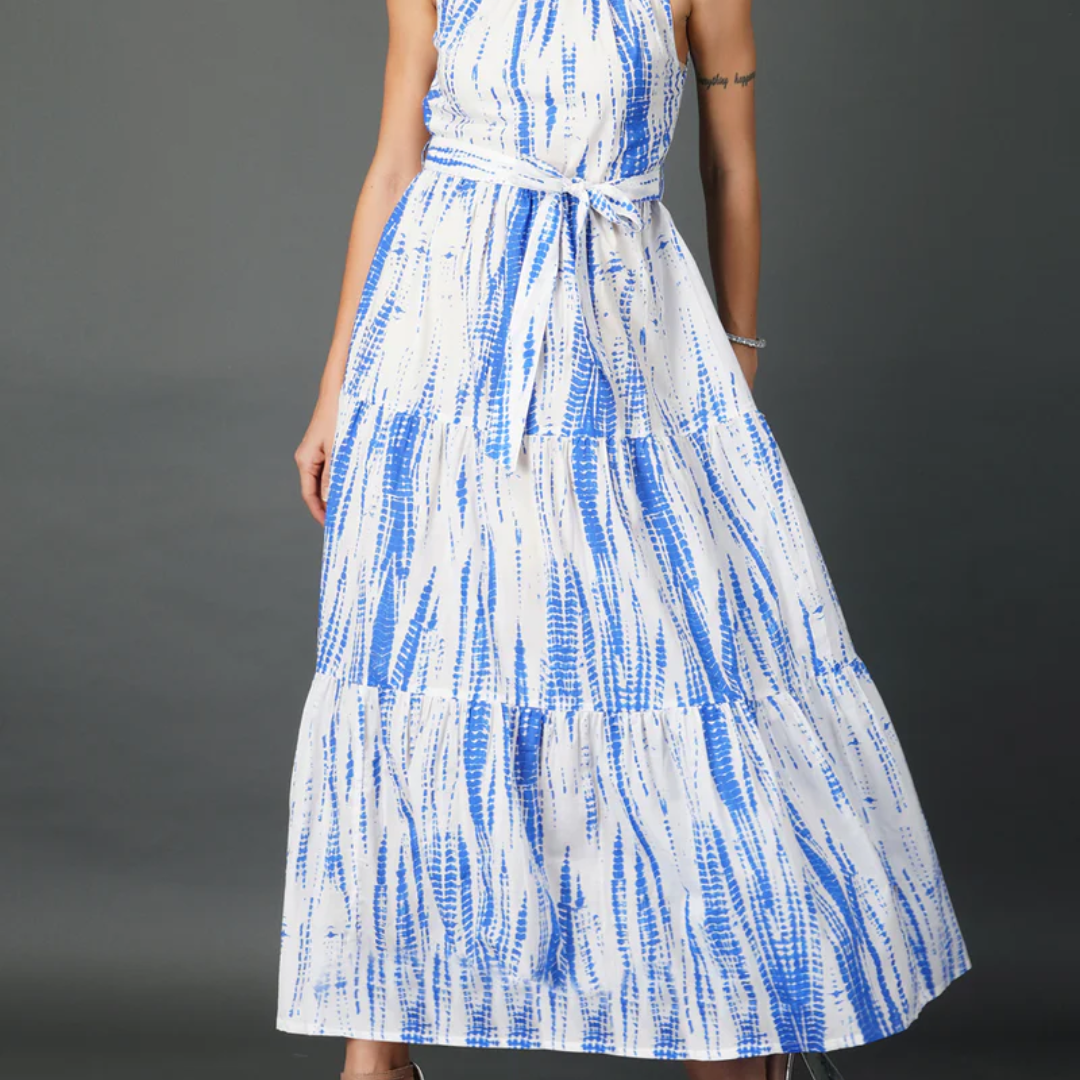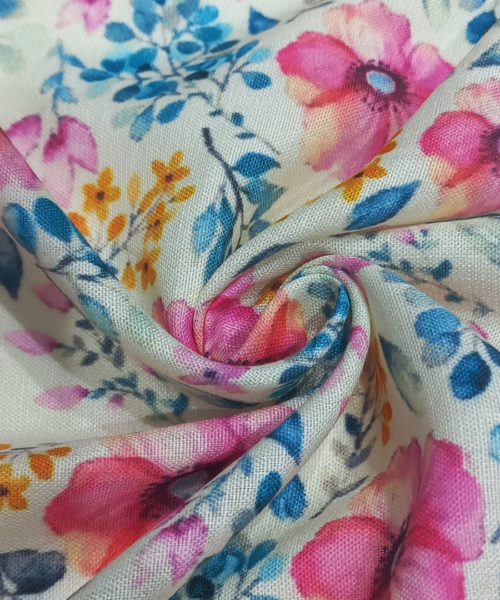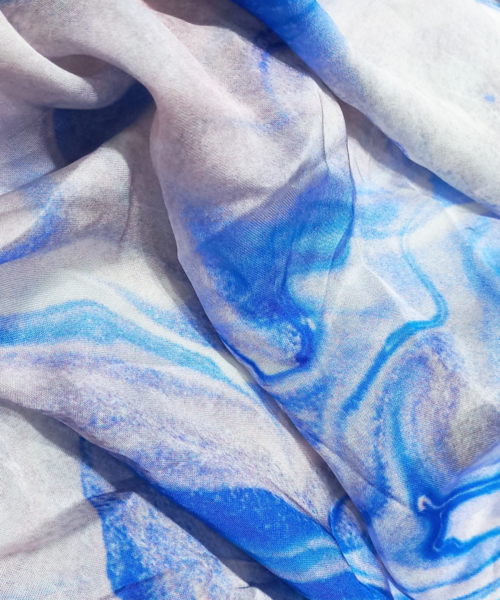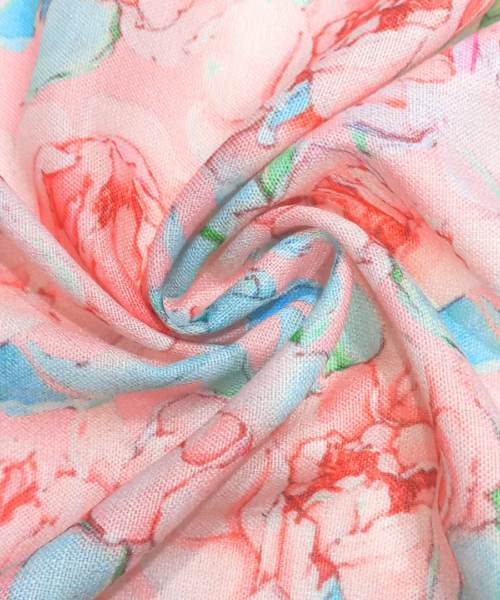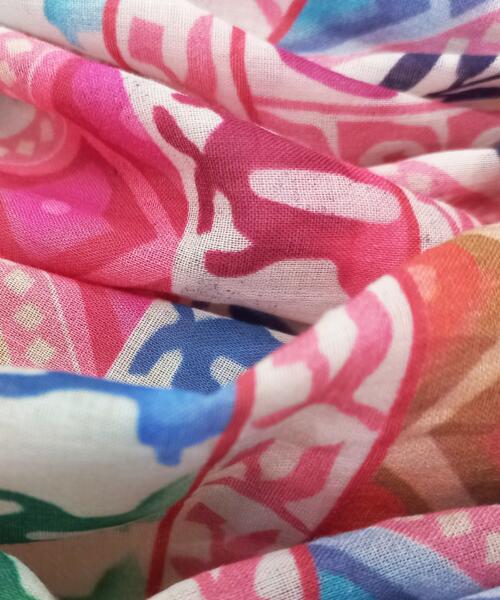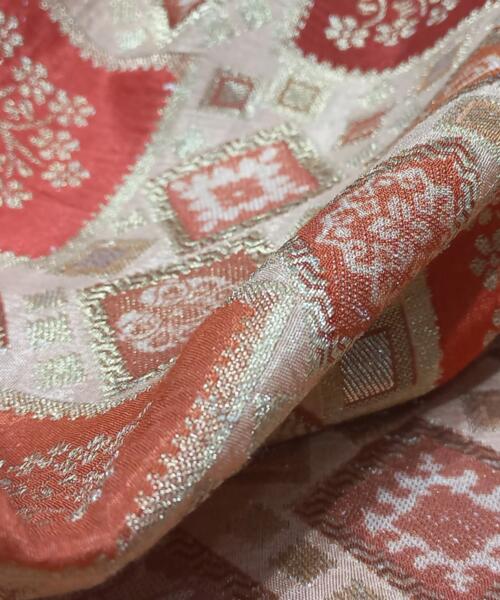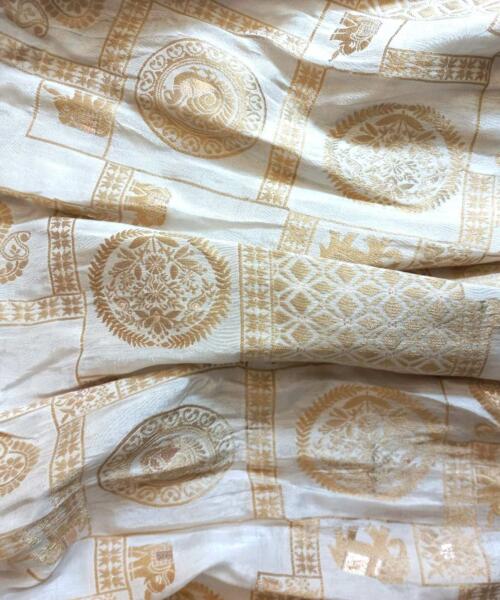Description
Shibori, a quintessential Japanese art form, has captivated the world with its intricate patterns and exquisite craftsmanship.
Rooted in centuries-old traditions, Shibori is a manual resist dyeing technique that yields mesmerizing designs on fabric.
Buy Blue Color Shibori Printed fabric
From its origins in ancient Japan to its modern-day resurgence, Shibori continues to enchant artisans and enthusiasts alike with its timeless appeal.
Understanding Shibori: Shibori, derived from the Japanese word “shiboru,” meaning to wring, squeeze, or press, involves the manipulation of fabric before dyeing to create patterns.
Artisans employ various methods such as folding, twisting, stitching, or binding to resist the dye, resulting in a range of captivating motifs.
The Six Main Types of Shibori:
- Kanoko Shibori (Bind and Resist): Kanoko Shibori, also known as the “tie-dye” technique, involves binding sections of fabric with thread before dyeing. By tightly wrapping these bound areas, artisans create distinctive circular or organic patterns reminiscent of the pebble-like motifs found in nature.
- Miura Shibori (Looped Binding): Miura Shibori employs a looping and binding method to produce intricate designs. Artisans use a hooked needle to gather and bind sections of fabric, resulting in mesmerizing geometric patterns with a sense of fluidity and movement.
- Kumo Shibori (Pleat and Bind): Kumo Shibori, or “spiderweb Shibori,” entails the meticulous pleating and binding of fabric to achieve intricate, spiderweb-like patterns. By strategically manipulating the folds and tensions, artisans create captivating designs reminiscent of delicate lace or intricate netting.
- Arashi Shibori (Pole Wrapping): Arashi Shibori, translating to “storm Shibori,” involves wrapping fabric around a pole diagonally before dyeing. By compressing the fabric and applying dye in a diagonal manner, artisans create dynamic patterns reminiscent of rainfall or wind-blown fabric.
- Nui Shibori (Stitched Shibori): Nui Shibori utilizes stitching techniques to create resist patterns on fabric. Artisans employ various stitching methods such as running stitch, backstitch, or chain stitch to shape intricate designs. Once dyed and the threads removed, the stitched areas reveal captivating patterns with a sense of movement and texture.
- Itajime Shibori (Fold and Clamp): Itajime Shibori, or “board-clamped Shibori,” involves folding fabric and sandwiching it between wooden or metal boards before dyeing. The pressure exerted by the boards creates distinctive geometric patterns characterized by crisp lines and symmetrical motifs.
The Enduring Legacy of Shibori: From its humble beginnings in ancient Japan to its modern-day applications in fashion and design, Shibori continues to inspire creativity and innovation across cultures.
Its timeless allure lies in its meticulous craftsmanship, rich history, and endless possibilities for artistic expression.
As we delve deeper into the world of Shibori, we uncover not just a fabric dyeing technique, but a profound reflection of Japanese aesthetics, ingenuity, and cultural heritage.
Whether adorning traditional kimonos, contemporary garments, or stylish home textiles, Shibori remains an enduring symbol of craftsmanship and beauty, transcending time and borders.
_____________________
What makes Shibori Printed fabric unique compared to other dyeing techniques?
Shibori stands out for its distinctive handmade quality and intricate patterns, achieved through various resist dyeing methods. Unlike printed fabrics, where designs are applied uniformly, Shibori’s charm lies in its irregularities and subtle variations, showcasing the artisan’s skill and creativity. Each Shibori piece carries a sense of authenticity and individuality, making it a cherished textile art form.
Can Shibori Printed fabric be used for both traditional and contemporary clothing designs?
Absolutely! Shibori fabrics offer versatility that transcends traditional and contemporary fashion boundaries. While Shibori’s roots are deeply embedded in Japanese culture and tradition, designers around the world are incorporating Shibori fabrics into modern silhouettes and styles. Whether it’s a classic kimono or a trendy jumpsuit, Shibori adds a touch of elegance and sophistication to any garment.
How durable are Shibori Printed fabric, especially after repeated washing?
Despite their delicate appearance, Shibori Printed fabrics are remarkably durable, thanks to the meticulous dyeing and binding processes. The resist dyeing techniques used in Shibori create designs that penetrate deep into the fabric, ensuring long-lasting vibrancy even after multiple washes. Proper care, such as gentle washing and air-drying, can help preserve the integrity of Shibori fabrics for years to come.
Can Shibori Printed fabric techniques be replicated using modern machinery?
While modern technology has streamlined many textile processes, the essence of Shibori lies in its handmade craftsmanship and organic aesthetic.
While machines can replicate Shibori-like patterns to some extent, they often lack the nuanced irregularities and artistic nuances that define authentic Shibori. True Shibori mastery requires the human touch, precision, and patience of skilled artisans.
Are Shibori Printed fabrics environmentally friendly?
Yes, Shibori Printed fabric is inherently eco-friendly due to its minimal water and energy consumption compared to industrial dyeing processes. Additionally, many Shibori artisans embrace sustainable practices by using natural dyes sourced from plants and minerals, further reducing environmental impact. By opting for Shibori textiles, consumers can support ethical and sustainable fashion choices.
Can beginners learn Shibori Printed fabric techniques?
Absolutely! While mastering Shibori Printed fabric techniques may require practice and patience, beginners can start with simpler methods such as tie-dyeing or basic stitching. There are numerous tutorials, workshops, and online resources available to guide newcomers through the fundamentals of Shibori, making it accessible to anyone with a passion for textile art.
What types of garments or accessories are commonly made with Shibori fabrics?
Shibori fabrics lend themselves beautifully to a wide range of garments and accessories, from flowing dresses and scarves to statement blouses and handbags.
Traditional Japanese attire such as kimonos and yukatas often feature Shibori designs, but contemporary designers also incorporate Shibori fabrics into skirts, tops, ties, and even home decor items like pillows and curtains.
Can Shibori fabrics be customized to suit individual preferences?
Absolutely! One of the joys of Shibori is its endless potential for customization. Artisans and designers can experiment with different folding, binding, and dyeing techniques to create unique patterns and color combinations tailored to specific preferences or design concepts.
Whether it’s a subtle gradient effect or bold geometric motifs, Shibori offers endless possibilities for creative expression.
Is Shibori limited to a specific color palette or can it incorporate a wide range of hues?
While traditional Shibori often features indigo blue hues, the beauty of Shibori lies in its adaptability to various color palettes.
Artisans can explore an extensive spectrum of natural and synthetic dyes to achieve vibrant shades ranging from earthy neutrals to bold primaries.
Whether it’s monochromatic elegance or vibrant multicolored designs, Shibori’s versatility allows for endless exploration of color possibilities.





